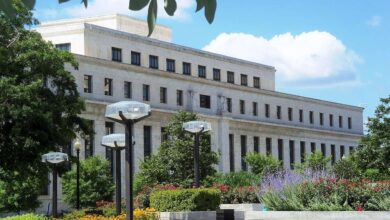Responding to Reich, Part 8: The ‘Enough to Buy Back the Product’ Fallacy

Myth #8 is titled “Corporate Tax Cuts Create Jobs.”
The opening scene depicts Reich hooked up to a lie detector. “Corporations and CEOs are job creators who need tax cuts and fat profits to generate jobs,” he says. Upon hearing this statement, the lie detector displays its analysis: LIES.
Reich goes on to lay out his argument as follows:
Most American jobs are created by poor, working-, and middle-class people whose spending on goods and services causes businesses to create jobs. If most Americans don’t have enough purchasing power, businesses won’t hire.
In 1914, Ford Motor Company boosted its workers’ wages. Their employees could afford to buy Model T Fords, enlarging the demand for Model Ts, thus creating more jobs at Ford. The Great Crash of 1929 ushered in the Great Depression of the 1930s because people didn’t have enough money to buy the goods and services the economy could produce, which caused a vicious cycle of fewer jobs and even less money in the pockets of average people. The cycle only ended when the government stepped in through vast public spending on World War II.
So when you hear that corporations need tax cuts in order to create more jobs, or that tax increases on corporations and the wealthy are job-killers, know that this is baloney. The best way to create more jobs is to put more money into the pockets of more workers, which is why we need a higher minimum wage, an expanded earned-income tax credit, and stronger unions that can bargain for higher wages. Remember, it’s working people who create jobs when they have enough money in their pockets to buy.
Reich uses a central diagram throughout the video to illustrate his point, displaying businesses and workers and the flow of money between them. The idea is that businesses can only create jobs when workers spend enough money, but the workers can only spend enough money when they have enough purchasing power, and they can only have enough purchasing power if the businesses they work for are paying them enough. Thus, the economy can either be in a vicious cycle or a virtuous cycle, depending on how well workers are being compensated for their labor.
It’s an intriguing story about how the economy works. But is it true? Well, not exactly.
A Faulty Premise
Reich’s argument is actually a fairly old talking point from the left. In fact, an entire chapter of Henry Hazlitt’s 1946 book Economics in One Lesson is dedicated to rebutting this exact argument. The chapter title reflects the common shorthand for this idea: “Enough to Buy Back the Product.”
We’ll look at Hazlitt’s argument in a moment, but first, let’s consider Dean Russell’s response in his 1963 article “Wages and Unemployment”:
You hear it everywhere: Wages must be kept high in order to increase the purchasing power of the wage earners, so that they can buy back the products they make in our factories, and thus keep everybody working and prevent depressions.
But in both theory and practice, that “high wage and spending” cliché confuses the issue in two ways. First, regardless of the division of industrial income between wage earners and dividend earners, that income will still be spent in one way or another for more goods and services. Thus, the issue is not “spending” as such, but rather who does the spending and for what. Second, it is capital investment (which is also “spending”) that builds the factories and provides the jobs here under discussion.
Russell makes the point—rather obvious in retrospect—that one person’s income is always another person’s cost. Thus, higher or lower wages have no overall impact on the total amount of purchasing power that’s “out there” in the economy.
Think about it this way: what’s the difference between me paying you $15 for an hour of labor or $20? In the former case, I retain the extra $5. In the latter case, it goes to you. But in both cases, the total purchasing power held between us remains unchanged. If my stash of money to start was $x and yours was $y, then it is simple to see that our combined stash of money stays the same regardless of how much I pay you, that is:
(x-15)+(y+15)=(x-20)+(y+20)=x+y
There’s a certain amount of money in the economy at any given time, and it’s always in someone’s possession. Raising or lowering wages will change who controls the purchasing power of that money and therefore who spends it, but it doesn’t change how much money there is to spend. Shareholders buy goods and services too!
The only way this possibly becomes a concern is if you argue that shareholders consume less than workers upon receiving additional income, and thus lower wages would allegedly lead to too much saving and too little consumption spending. If this were the case, economists would say workers have a higher marginal propensity to consume. But this “underconsumption” argument is really a separate discussion, and it’s unclear whether this is what Reich is getting at, so we won’t get into it here. Suffice it to say, the underconsumption concern has likewise been contested by free market proponents ever since it was first raised.
Distorting the Economy
Hazlitt’s approach to the purchasing power argument is a bit more technical, but still worth considering. After some preliminary remarks, he makes the point that wages are a cost of production for businesses, and you cannot simply increase a business’s costs without creating other impacts:
Every increase in hourly wages, unless or until compensated by an equal increase in hourly productivity, is an increase in costs of production… If a 30 percent increase in hourly wages all around the circle forces a 30 percent increase in prices, labor can buy no more of the product than it could at the beginning; and the merry-go-round must start all over again.
Do prices really go up in lockstep with wages? Hazlitt addresses this and related questions as he continues his analysis. His argument is a bit too complex to lay out in full here, but his conclusion is basically that whenever wages are artificially raised above marginal productivity (which is what the free market tends toward), the end result is a distorted economy, with workers as a whole being worse off. Specifically, the distortions will lead to a reduced production of goods and services, which will likely result in lower real wages for most workers.
So Do Corporate Tax Cuts Create Jobs?
As we can now see, the purchasing power argument for artificially high wages is seriously flawed. The most basic problem is that it assumes the amount of purchasing power in the economy is determined by how much workers are paid, when the reality is that paying workers more or less simply shifts where the purchasing power is held. A second problem, as Hazlitt pointed out, is that artificially high wages create distortions in the economy, causing things to be worse rather than better—even for the workers themselves.
With these matters out of the way, we can turn back to Reich’s main point: the supposed “myth” that corporate tax cuts create jobs. Is that really a myth?
Here’s one way to think about it: what would the corporation do with the extra money? The only realistic options are 1) reinvesting the funds into expanded business operations, 2) investing in shares of other companies, or saving the money in a bank which then uses it to invest in other companies, 3) giving their employees higher salaries, or 4) paying the money out as dividends.
Notably, all four of these options eventually result in some amount of job creation.
Expanding business operations means acquiring land and capital and hiring labor, so clearly if they go that route they will be creating jobs.
Consider a local mom-and-pop store. They find out one day that their taxes will be lower and they will be allowed to keep more of their profits. What do they do? One plausible outcome is that they open a second location and hire new workers to work there. The exact same principle works on the scale of a large corporation.
Option 2 creates the same result, just with extra steps. Money invested in other companies is eventually used by those companies to expand their own business operations.
And what about higher salaries and dividends? These options would give more money to employees and shareholders, respectively, who will likely invest most of those funds in other enterprises, which will in turn use the new funds to expand their operations, that is, to acquire land and capital and hire workers.
Hence, no matter what a business does with the money saved from lower taxes, that money is eventually used, in part, to create new jobs.
With higher tax rates, these initiatives become impossible, as the money simply goes to the government. True, the government uses tax revenues to hire government workers, so it’s an empirical question whether any given tax change will lead to more or fewer jobs on net. But the point is simply that, contra Reich, corporate tax cuts do often lead to new jobs being created.
Additional Reading:
Wages and Unemployment by Dean Russell
Economics in One Lesson by Henry Hazlitt
Paid Enough to Buy the Product by William L. Anderson
The post Responding to Reich, Part 8: The ‘Enough to Buy Back the Product’ Fallacy was first published by the Foundation for Economic Education, and is republished here with permission. Please support their efforts.



